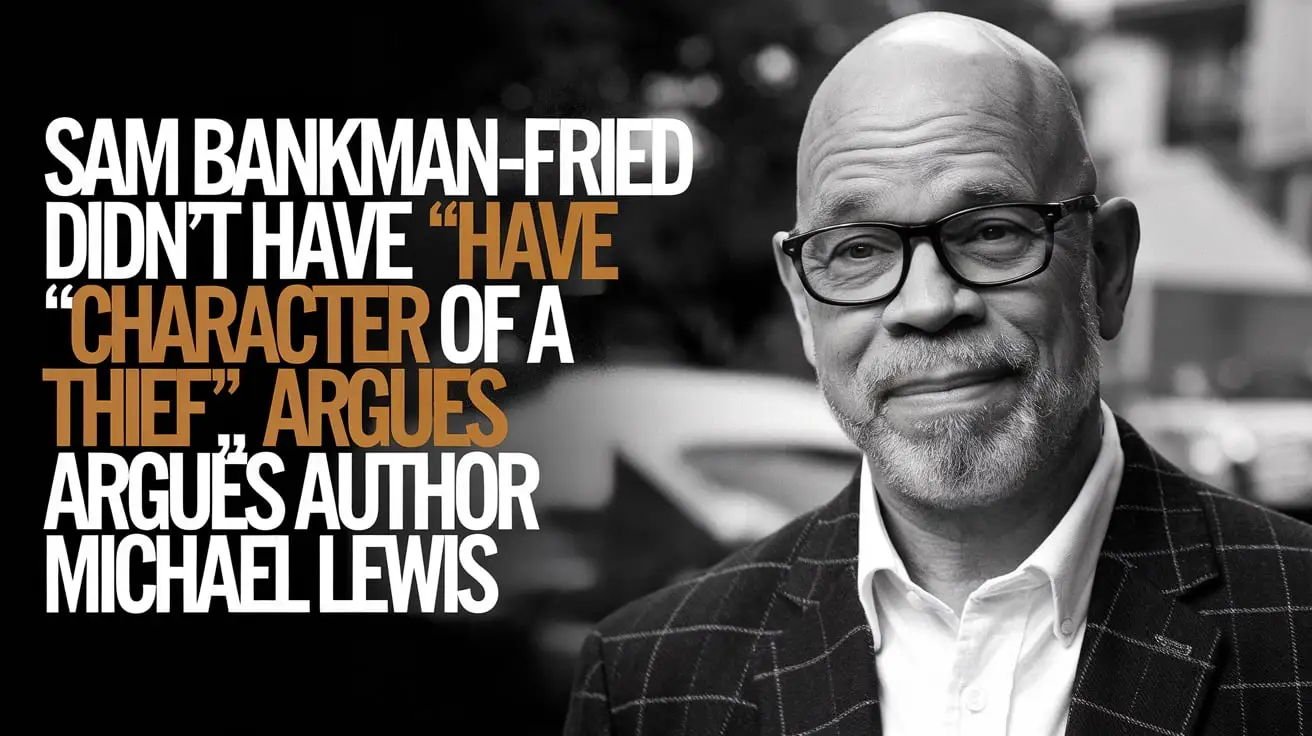Physical Address
304 North Cardinal St.
Dorchester Center, MA 02124
Physical Address
304 North Cardinal St.
Dorchester Center, MA 02124


The collapse of FTX, one of the largest cryptocurrency exchanges, has left many questioning how its founder Sam Bankman-Fried (SBF) was able to amass such wealth and influence at a young age. While SBF is facing investigations and allegations of fraud, some argue his actions may have been more complicated than pure greed or theft. Acclaimed author Michael Lewis explores this perspective in a recent article.
Just over a year ago, SBF was considered a crypto wunderkind and philanthropist. At only 30 years old, he had built FTX into a giant valued at $32 billion at its peak. With his personal net worth estimated around $26 billion, SBF was donating large sums to political campaigns and charitable causes.
Due to his involvement with effective altruism communities and donations to organizations like GiveWell, SBF cultivated an image of being intelligently generous with his wealth in order to make the biggest positive impact. While other crypto executives like Do Kwon flaunted luxury cars and mansions, SBF lived frugally and claimed he would give the majority of his fortune to charity over his lifetime.
Lewis argues that certain personality traits may help explain how SBF found himself in his current situation, while also making a clean characterization of him as a simple thief more difficult. Based on interviews with SBF’s friends and colleagues, Lewis outlines some of SBF’s defining characteristics:
From a young age, SBF displayed an intense drive to succeed and better the world. As a college dropout, he worked obsessively to learn as much as he could and build up FTX into an industry powerhouse at lightning speed. According to Lewis, “He worked 20 hours a day, seven days a week, for years with almost no time off.” This level of ambition and productivity blurred work with the rest of his life.
As an “effective altruist” focused on making the biggest impact, SBF took career risks that many would not. He was willing to forgo job security or conventional paths for opportunities to change the world through projects like FTX and effective altruism communities. However, this risk-taking spirit may have extended too far in some of his later business decisions.
SBF believed deeply in his analytical and financial skills, which some argue made him overly confident. According to Lewis, “His decision-making model, such as it was, involved trusting himself more than data or outside opinion.” This type of “effective altruist” mindset where one relies primarily on their own reasoning abilities could enable unchecked risk-taking.
While they may help explain his mindset and success driving FTX to prominence, some of SBF’s personality traits likely contributed to questionable business practices as the company grew rapidly:
As Cryptocurrencies and effective altruism were intertwined with SBF’s personal and entrepreneurial identity, the boundaries between his ventures became blurred. FTX funds were used to back risky bets by SBF’s trading firm Alameda Research. This commingling of customer deposits with a loosely regulated trading operation was a recipe for solvency issues.
In hindsight, some of Alameda’s trades with FTX deposits were extremely risky, such as borrowing customer money to buy FTT tokens that collapsed in value. While SBF stresses this was not fraudulent behavior, critics argue it was irresponsible given the unregulated nature of the industry and the need to protect customers.
FTX saw meteoric growth but lacked proper accounting practices, regulatory licenses, or other structures required of a major financial institution. According to Lewis, SBF focused more on “conquering the world” than compliance burdens like customer funds protections. This left the company vulnerable when risks materialized.
Rather than a simple “Ponzi scheme”, Lewis argues that SBF’s downfall resulted from taking big risks in pursuit of an audacious vision that led the company into a liquidity crisis. Desperate to avoid collapse, SBF made questionable behind-the-scenes transactions and misled regulators about FTX’s solvency.
Friends and colleagues interviewed by Lewis believe greed was not SBF’s primary motivator. They characterize his actions during the meltdown more as a panic-stricken gambit to save his life’s work rather than intentional fraud. As one friend said,” This was not a simple story of a architect plutocrat launderer.There was no moment where Sam said,’ Let’s go steal money from people.'”
In messages after the fall, SBF expressed deep remorse over failing investors and sincerely wanting to make things right. He took full responsibility for the collapse rather than blaming outside forces. According to Lewis, this sincerity challenges the narrative of SBF as a sociopathic thief.
While legal judgements of SBF’s actions are still pending, Lewis argues there is value in attempting to understand how a person so talented and driven could make such catastrophic mistakes. With complex personalities and events involved, clear-cut villainization may serve public outrage but not uncover important lessons. There seem to be no simple answers in the case of SBF and FTX’s demise.
In conclusion, through thoughtful analysis and outside perspectives, Lewis brings nuance to understanding the complicated downfall of Sam Bankman-Fried and FTX. While legal accountability is warranted, reducing the story to simplistic terms may avoid deeper examination of the human factors involved. As regulatory reform proceeds in the cryptocurrency industry, acknowledging such complexities could help safeguard against future breakdowns of this nature.